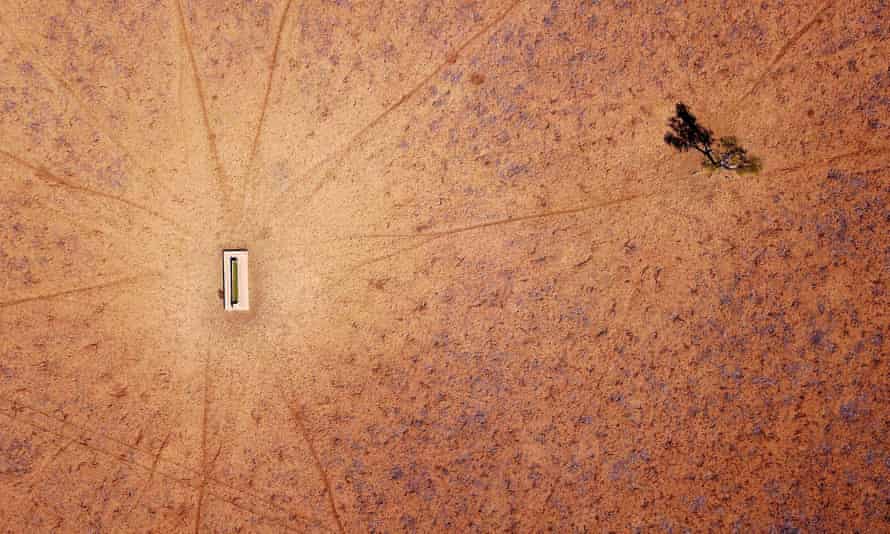Extract from The Guardian
Fossil fuel and other emissions not linked to the land and agriculture increased by 7% over the past 15 years, analysis finds.

The reduction in emissions in Australia over the past 15 years was largely due to two major shocks beyond government control – the drought and the pandemic, analysis from the Australia Institute has found.
Last modified on Mon 24 May 2021 06.54 AEST
Despite official accounts showing Australia’s greenhouse gas emissions are falling, its contribution to the climate crisis has increased over the past 15 years once areas beyond the federal government’s control – the drought and emissions from land and forests – are excluded.
Scott Morrison told a climate leaders summit hosted by the US president, Joe Biden, last month that Australia had cut its emissions by 19% since 2005. The prime minister said it was “more than most other similar economies” had done and the country was “on the pathway to net zero”.
An analysis by the Australia Institute found the reduction in emissions over the past 15 years was largely due to two major shocks beyond government control – the drought and the pandemic – and mostly historical changes in the amount of CO2 released from the land and forests.
Fossil fuel and other emissions not linked to the land or agriculture sectors – those from electricity, industry, mining, transport and landfill – actually increased by 7% prior to Covid-19.
The institute found on this basis Australia had done much less to reduce emissions than several comparable countries, including the US, UK and members of the European Union.
Richie Merzian, the institute’s climate and energy director, said it showed the Morrison government’s claims the country was on track to meet its 2030 emissions target (a 26-28% cut) and was doing more than others did “not stack up”.
He said emissions reductions from Australia’s electricity generation due to an influx of solar and wind had been more than eclipsed by increases from big industry and transport, and federal policies that had helped drive the growth in renewable energy pre-dated the Coalition’s election in 2013.
“The harsh truth is that the Australian economy has not decarbonised over the last 15 years,” Merzian said. “This might explain why the Australian government has been so reluctant to commit to a net zero target when the economy is headed in the wrong direction.”
The Australia Institute presented its analysis to officials from nearly 50 diplomatic missions in Canberra last week in what Merzian said was an attempt to show Morrison’s suggestion his government was acting more than others on climate was “not the full picture”.
He said the government’s claim Australia was cutting emissions was taking credit for changes in CO2 exchange between the atmosphere and the land and forests.
The institute’s report showed there had been a spike in emissions from forest destruction in Queensland in 2005 that reduced in the years that followed. Emissions also fell due to a structural decline in native forestry that was accelerated by the global financial crisis. Neither were due to federal climate policy.
“There has been no structural change in the economy,” Merzian said. “By contrast, key allies like the United Kingdom and United States have decreased their net emissions and are exercising real credible climate leadership.”
A spokesperson for the emissions reduction minister, Angus Taylor, did not specifically address the analysis, but said the Australia Institute was a “leftwing political group” that would “never acknowledge Australia’s achievements in this space, because it doesn’t suit their biased agenda”.
“Their work has zero credibility,” the spokesperson said.
Diplomatic pressure on Australia to do more on climate has increased significantly in recent months as Britain has focused on boosting global action at a major UN climate summit in Glasgow in November, and Biden has said he will make climate action central to his presidency.
All G7 members have lifted their climate commitments for the next decade, reflecting that scientists say deep cuts in emissions are needed now if the world is to live up to the goals of the Paris agreement.
Morrison’s unwillingness to do the same has had ramifications. He was denied a speaking slot at a global climate ambition summit in December for not offering new commitments. The UK prime minister, Boris Johnson, and the Biden administration have made it publicly clear they expect Australia to do more. The EU is working on a carbon border tax that is not aimed at Australia but could affect it, and is seen as a forerunner of what other countries may do.
They called on “all countries, in particular other major emitting economies, to join the growing numbers that have made 2050 net zero commitments”, to present “specific and credible strategies for achieving them” and to boost 2030 goals accordingly to keep limiting global heating within 1.5C “within reach”.
The G7 has pledged to stop all overseas financing of coal. A major report by the International Energy Agency last week said there was a “narrow and extremely challenging” pathway through which the world could meet the Paris commitments. It would require no new investments in coal, oil and gas, starting immediately.
The Morrison government is spending hundreds of millions of dollars on a “gas-fired recovery” from the pandemic, including last week committing $600m for the publicly owned Snowy Hydro to build a new gas-fired power plant in New South Wales. Experts say the plant is not needed to replace the Liddell coal plant, which closes in 2023.
No comments:
Post a Comment